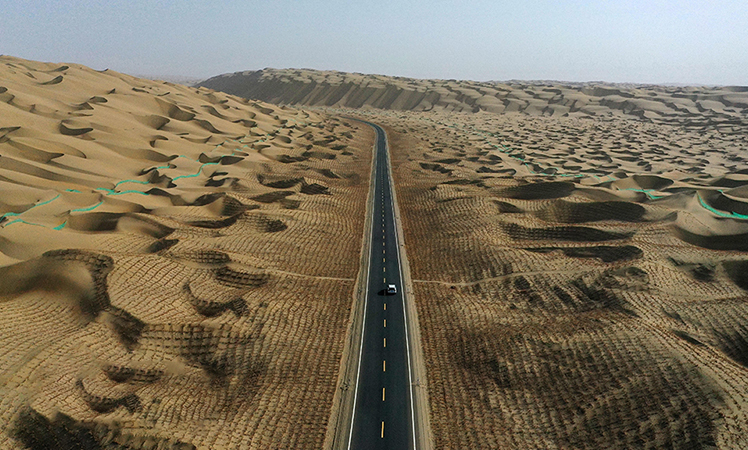Feature: "Railroad, take me home" -- chronicles of a Tibetan bullet train driver
LHASA, July 4 (Xinhua) -- As a train whistled its way into the Xigaze railway station in southwest China's Tibet Autonomous Region, some Tibetan passengers carefully approached the locomotive cab with curious looks.
"Where is the train's steering wheel?" "How many drivers are needed to drive such a long train?" Upon hearing their murmurs, train driver Sonam Wangdrak could not help but smile.
"When I responded in Tibetan that trains plying on railway do not require a steering wheel and that only one driver was needed to operate, they were surprised to learn I'm also a Tibetan," said Sonam Wangdrak, 35. "At that time, I felt very proud."
Sonam Wangdrak is the first Tibetan driver of the bullet train in Tibet. When the Lhasa-Nyingchi Railway began operations on June 25, 2021, he drove the first Fuxing bullet train in Tibet from the regional capital Lhasa to Nyingchi City.
Sonam Wangdrak's maiden encounter with a train was at the age of 16. He traveled via railway to Lanzhou, capital of northwest China's Gansu Province, to study at the Lanzhou railway machine school, now Institute of Railway Technology of the Lanzhou Jiaotong University.
Unable to afford a plane ticket, he spent three days and two nights traveling by different buses from his home in rural Qamdo to Golmud, the nearest railway station located in Qinghai Province back then, to board a train.
"The train trip was amazing. It was faster and much more smooth than the bus journey," he recalled.
After graduating in 2007, he received training to operate diesel-powered trains on the Qinghai-Tibet Railway, the first railway line to open in Tibet in 2006.
Situated on the Qinghai-Tibet Plateau, known as the roof of the world, Tibet has an average altitude of more than 4,000 meters with complicated landforms.
The trains Sonam Wangdrak and his colleagues drove traversed through some areas more than 5,000 meters above sea level.
"While passing through the highest area, some of us had to turn to oxygen inhalation. I can't imagine how difficult the railway construction might have been back then," he said.
Sonam Wangdrak often spotted wild animals such as Tibetan antelopes, wild yaks and even bears, during the journeys, and he and his coworkers avoided honking the horn so as not to disturb them.
After the Qinghai-Tibet Railway began operation, the Lhasa-Xigaze Railway was launched in August 2014. The Lhasa-Nyingchi line, the first electrified railway in Tibet where Fuxing bullet trains run, was put into operation last year.
Sonam Wangdrak witnessed tall buildings emerging along the railways on the plateau, with industrial clusters and shopping streets mushrooming near the stations.
The Lhasa railway station, where the three lines meet, has seen explosive growth in passenger flow, surging from 2.24 million in 2007 to more than 4 million in 2021.
Tsogpa, who has been working at the station since 2006, said people of various ethnic groups in Tibet are eager to embrace new technology and modern modes of transportation.
"They prefer trains because the journey is smooth and fast and the ticket fare is cheap," said Tsogpa, who is now office director of the station.
In the near future, the Sichuan-Tibet Railway will connect Sonam Wangdrak's hometown with the rest of the country.
"I hope my mother can board the train I drive soon," said Sonam Wangdrak, adding that he cannot wait to return home by driving a train.
Photos
Related Stories
- 'He died a true hero': Remembering Yang Yong, driver who saved a train of lives
- 1 dead, 8 injured after bullet train derails in SW China
- Young mechanists at Jinan bullet train service station maintain trains for safe operation
- NW China's Lanzhou station prepares for holiday travel rush
- Remote Daliang Mountain in SW China sees departure of first bullet train
Copyright © 2022 People's Daily Online. All Rights Reserved.









